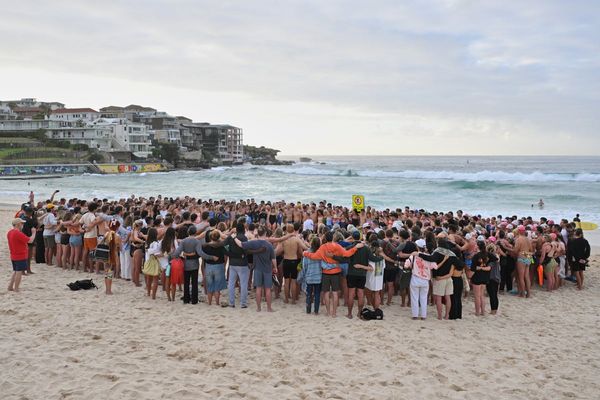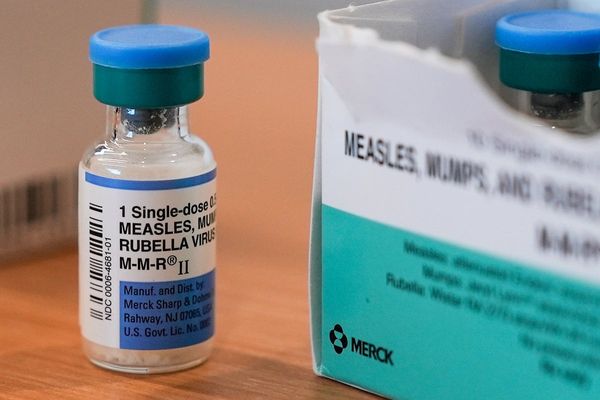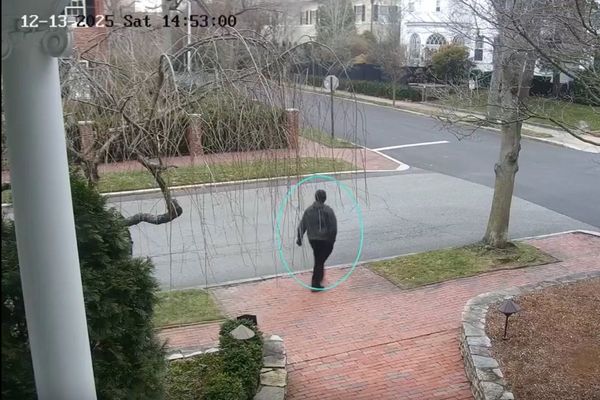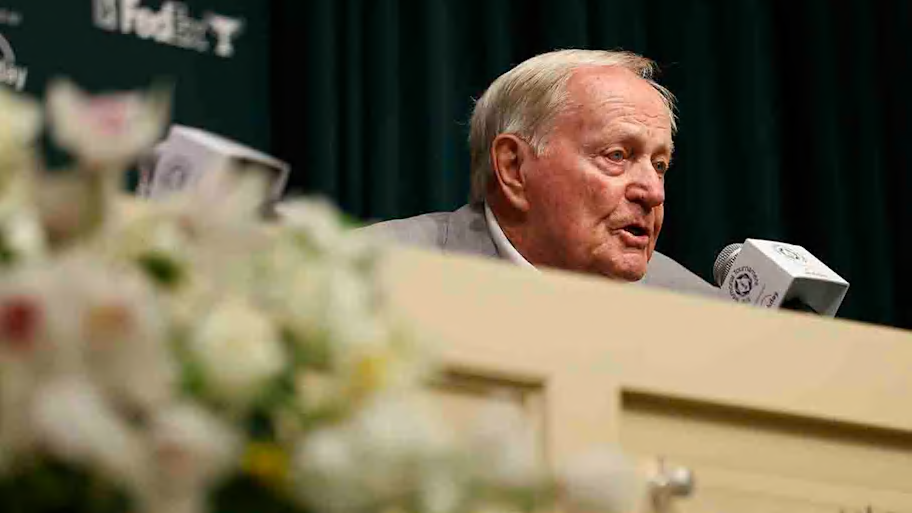
DUBLIN, Ohio — If you look closely at the Muirfield Village logo, it is a crest that encircles a trophy. That trophy is the Claret Jug, the prize for winning the British Open and where Jack Nicklaus won the first of his three titles at Muirfield, Scotland, in 1966.
A decade later, he launched his own tournament that is now, remarkably, celebrating its 50th year at a course Nicklaus designed in the early 1970s and named in honor of his first Open victory.
At age 85, the Golden Bear is still a monumental presence at his own event, still a source of inspiration for the players who compete and a comfortable elder statesmen who seems to enjoy reminiscing about many of the aspects that led to this point.
“We had a lot of names and one was called the New Course,” Nicklaus said of how he settled on the name for the club. “We named the area Muirfield Village and didn’t want to name it directly ‘Muirfield’ because I didn’t want to be a dead copy after Muirfield.
“But I was so happy with what happened with me at Muirfield, winning the British Open at a place where I wasn't supposed to win. It was a golf course with very narrow fairways, very high rough, not typical of what Jack Nicklaus would, they thought in 1966, could win at. And, but I was so proud of that, this place became Muirfield or Muirfield Village.”
Related: From the SI Vault — Nicklaus Wins the 1966 British Open at Muirfield
Nicklaus shot a final-round 70 that year having trailed Phil Rodgers by two strokes through 54 holes and edged Doug Sanders and Dave Thomas by a stroke. His financial prize for winning was £2,100, or about £2,900 based on today’s exchange rate. It would have barely covered the trip.
The victory was Nicklaus’s sixth major title and helped him become just the fourth player to complete the career Grand Slam. Although it didn’t count as a PGA Tour victory at the time (it was later added to his total), the win would have been his 19th in chronological order.
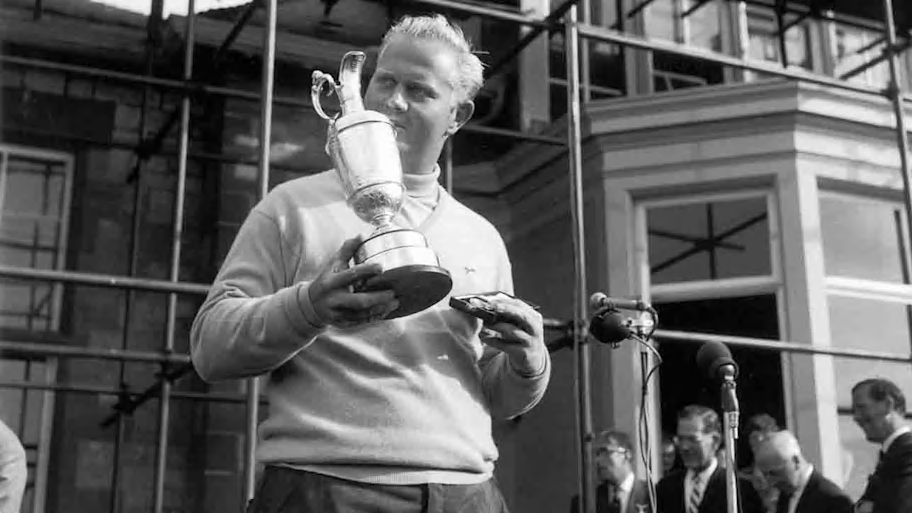
Only 26, Nicklaus already had his thoughts on bringing an event to his hometown of Columbus, Ohio, and began embarking on the mission to accomplish it.
“It took 10 years to get there,” Nicklaus recalled. “We started the idea of the tournament and bringing golf to Columbus in 1966 at Augusta. So it took us 10 years to get the golf course built, financed, and move forward.
“Of course, a lot of help from a lot of people, particularly Joe Dey (the PGA Tour’s first commissioner who began in 1968). Joe Dey came out here and walked in the mud with me. I don't know that you all realize. . .but to get the date we got, we ended up having to do two years of paying our dues. In Cincinnati, we had two years at Kings Island, which was the forerunner of the Memorial Tournament.
“Then we got the date, which was around Memorial Day. Joe came up with the idea of—he says, It's Memorial Day. And around Memorial time, he says, why don't we honor the past people who have contributed to the game of golf in the past?”
That led to the idea that exists today in which the tournament honors someone in the game. A captain’s club was formed to select the honorees and Nicklaus’s wife, Barbara, received the honor this year.
The initial Captain’s Club included Clifford Roberts, who was at the time the first and only chairman of Augusta National Golf Club in its history. The first honoree was Bobby Jones, who founded the Masters along with Roberts and had passed away in 1971.
“Cliff Roberts said, Jack, you've got an opportunity to do here in 10 years what it's taken us 40 to do at Augusta,” Nicklaus said. “And he says, ‘And my books are open to you. Whatever you want to know and whatever we can do to help you, it's open.’
“I haven’t had that many offers from many places like that, not particularly from Cliff Roberts. And of course, then Bob Jones was our first honoree. And of course, our first Captains Club—I can’t remember who always was captains, (but) Byron Nelson, Gene Sarazen, Cliff Roberts, Chick Evans. I can’t think of who all ... But anyway, that Captains Club was our guiding light and started us in the tournament.”
Roger Maltbie won the first tournament in 1976, a sudden death playoff win over Hale Irwin.
A year later, it was Nicklaus who prevailed.
“We had bad weather, and I finished it on Monday morning and won that,” Nicklaus said. “And I have always felt that that was probably the most difficult tournament that I had ever won, hardest because of what I did as it relates to the tournament. I was out picking up papers all the time, stuffing them in—I don’t remember who was caddieing for me, probably Angelo (Argea). Stuffing them in his pockets and checking stakes in the ground, and if I saw something here, I wrote it down, and Barbara would come in with her checklist at night, I saw this out there, and that. So we would go through that, try to get it fixed the next day.”
Nicklaus would win again in 1984 and went on to play the tournament 30 consecutive times through 2005.
That was when he was 65 and also played in his final Masters and final Open.
In the ensuing years, Nicklaus has remained a constant force with the tournament. Playing and organizing his own tournament might have been problematic, but there is still a flurry of activity, with a schedule planned out to the minute as Nicklaus meets with various dignitaries, sponsors, media, PGA Tour officials, tournament staff, Muirfield Village staff, players ... you name it.
“He does such a good job at his tournament of being around, and the last few years especially, asking players about his golf course I think is a really cool thing that he does,” said Scottie Scheffler, who won the Memorial last year. “He wants this golf course to be the best test of golf, and so the last couple years he’s just been sitting in player dining basically asking guys what they think of the course. And he’s not sitting in there for everybody to be like, 'Hey, we love it, it’s great, everything’s the best.’ He’s like, ‘No I want you to tell me how we can continue to improve this tournament.’
“I think for a man that has the experience he has in the game of golf, for all the stuff he has accomplished, for him to be sitting in dining asking the current guys how he can improve his tournament I think is really cool.”
There’s no doubt, Nicklaus has been a tinkerer. He’s made numerous changes to the course over five decades and acknowledged that it was originally designed with the intention of it being a top tournament course.
That, he said, was part of a design philosophy that has evolved over his time in the business.
“We always wanted to have a tournament, from its inception,” Nicklaus said. “And probably from a design standpoint I wouldn’t have designed the golf course this way. What I mean by that is I designed this golf course basically for a tournament, and spent the next 50 years trying to ease it enough so the average member can play it.
“I would have done it the other way around. Had it a little bit more user-friendly to start with, which is what I do now, more user friendly now, and if I want to lengthen a hole here or there to handle a tournament, I would do it that way.
“And my early golf courses, the early golf courses that I did, which were here, Shoal Creek, Castle Pines, Glen Abbey, Annandale ... they were all golf courses that people wanted to play tournaments on. So I got known for the guy who was doing tournament golf courses.”
Among the many things Nicklaus does during the week is meet with the media, and that session on Tuesday again provided plenty of fodder. Among the topics covered were the 50th anniversary of the tournament, Rory McIlroy’s absence, the letter he wrote to McIlroy after winning the Masters, his thoughts on the upcoming U.S. Open at Oakmont, the story about Arnold Palmer offering to split the playoff purse with him at the 1962 U.S. Open, his thoughts on Tiger Woods and senior golf, and again back to his tournament.
“It special to me because we started from nothing,” Nicklaus said. We started with an idea. We came out and started looking at property. Found the property that I had known as a kid. Developed it into a golf course. Got the city of Columbus to bring us water past the city of Dublin, and then we fed the city sewer and water back to Dublin. We've been a catalyst to grow this whole northwestern side of Franklin County. The business that has come into the Dublin area, largely because of what we did here.
“There’s so many things that have happened because of what happened here. Not just the golf tournament. The golf tournament’s been great. I mean, it’s grown in stature, it’s grown in the eyes of the golfing world and the players. The players love to come here and play. It’s like, you know, ‘Hey, can we get in?’ ... I mean, the things that have happened. And then to honor Barbara this year, I mean, that’s really, obviously, extra special.
“But all the things that have happened have been certainly on the positive. It’s been a huge part of the PGA Tour. We didn’t design this golf course—or golf tournament to be a major championship. That was not our goal. Our goal was to do a tournament and be a service to the game of golf. And whatever we could do to help grow the game and further the game, and particularly in Central Ohio, that’s what we wanted to do.”
This article was originally published on www.si.com as 'We Started From Nothing': Jack Nicklaus Reflects on Origins of the Memorial Tournament.

